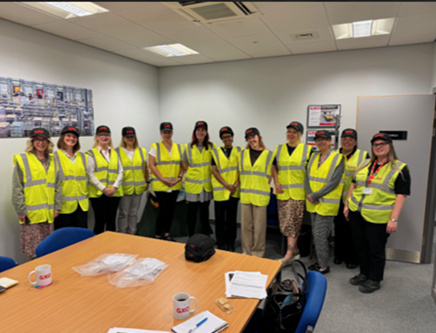Evaluation is often something that happens at the end of a project, but what if we built learning into the process from the very start?
At Newcastle-based charity Ways to Wellness, we believe that embedding a culture of learning from the outset helps social prescribing link workers share real-time insights, refine approaches, and ultimately improve support for the communities we serve.
Co-designing for impact
A core part of our work is connecting with local communities to shape and refine prototypes that align with our mission:
Extending learning into maternal mental health
One area where this model has been used is in maternal mental health. After eight months of Learning Community meetings, we expanded this approach through a series of external learning events. These events:
By opening up new referral pathways, we helped develop best practices for integrating link workers into maternal healthcare settings.
Turning insights into action
Our Learning Communities aren’t just discussion spaces - they drive change. Link workers use them to:
Why this approach matters
By embedding a culture of continuous learning, we are:
At Newcastle-based charity Ways to Wellness, we believe that embedding a culture of learning from the outset helps social prescribing link workers share real-time insights, refine approaches, and ultimately improve support for the communities we serve.
 |
| One area where this model has been used is in maternal mental health |
Co-designing for impact
A core part of our work is connecting with local communities to shape and refine prototypes that align with our mission:
- Improving health and wellbeing
- Tackling health inequalities
- Reducing demand on NHS services
"A group of peers who come together in a safe space to reflect and share their judgements and uncertainties about their practice and to share ideas or experiences to collectively improve."To embed this approach into recruitment and training, we:
- Included an expectation for link workers to actively engage in Learning Communities
- Encouraged participation in ‘test and learn’ approaches
- Provided ongoing support and facilitation to foster a sense of ownership and belonging.
Extending learning into maternal mental health
One area where this model has been used is in maternal mental health. After eight months of Learning Community meetings, we expanded this approach through a series of external learning events. These events:
- Shared early insights from our maternal mental health prototypes
- Brought in new partners to co-develop next steps
- Strengthened cross-sector collaboration
By opening up new referral pathways, we helped develop best practices for integrating link workers into maternal healthcare settings.
Turning insights into action
Our Learning Communities aren’t just discussion spaces - they drive change. Link workers use them to:
- Identify barriers in accessing social prescribing
- Test new ways to connect people with support
- Share insights at external events and policy discussions
Why this approach matters
By embedding a culture of continuous learning, we are:
- Strengthening partnerships across health and care sectors
- Ensuring services are designed with communities, not just for them
- Maximising the impact of social prescribing
That’s why we’re committed to testing, learning, and adapting - so that social prescribing continues to evolve, improve, and reach the people who need it most.
Find out more at: waystowellness.org.uk
Find out more at: waystowellness.org.uk
Image credits: Ways to Wellness Limited company number: 08798423






